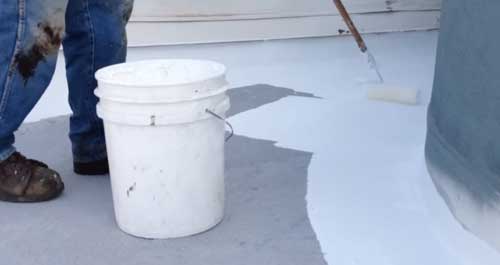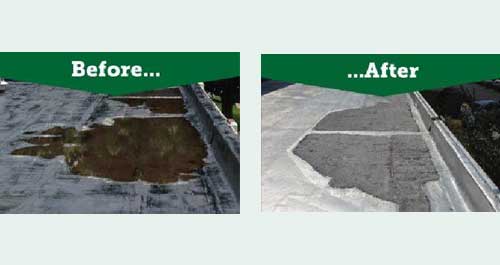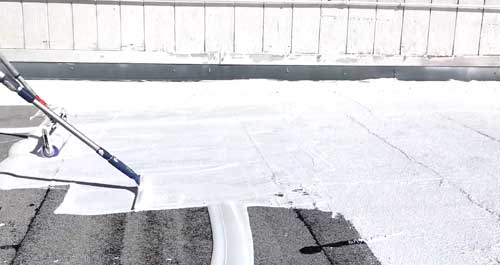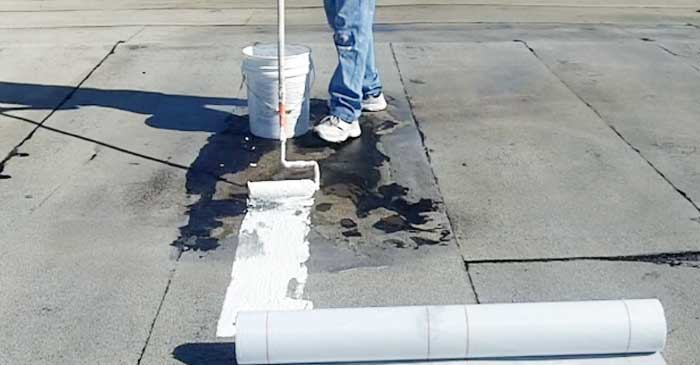How to Fix Ponding Water on a Flat Roof
A flat roof prone to ponding is quite a common problem that anyone could experience, especially if it rains really badly. If your flat roof is still in good condition, ponding water is probably not the problem as it will automatically drain or even evaporate, but if your flat roof suffers from uneven areas due to sagging or has an issue regarding insufficient slope and drainage, the ponding water may not dissipate.
The Solution to Ponding Water on Flat Roofs
Once you find that there is ponding water over your flat roof, repairing it is a must. According to roofers, compounds of roof filling are heavy, brittle, and useless as they consume more time.
The market offers a solution to fix the said issue. You can try to trade products which are made available to fix your problem as quickly and easily as possible.
Greenslopes is one of the traded products trended in the market. It was considered incredibly effective and easy to use all around the globe. In many countries, Greenslopes is the traded product that is considered as the only solution for every water ponding filler.
Bear in mind that if the sag of the flat roof has small uneven areas, the roofer must do everything to level it. Under the DIY flat leveling compound kit, the said leveling is easy to apply. Leveling comes with packing the dip as well as the sealing of a waterproof coating. It can help you create a slope that will navigate the water right onto the drainage. This solution is way better and easier than all the solutions provided as it only takes a few hours to apply, super easy to use, and can save your roof repair cost.
What are the Common Problems Caused by Flat Roof Ponding?

- The roofing material’s quality is not that good especially if it’s already modified from a used and older material that’s already been built up for roofs.
- Possible damage to the bearing structure when loading due to the water’s additional mass during heavy rainfall.
- During the winter season, the water piled-up is more likely to solidify and expand that can cause more damage.
- If the seams overlap, a large mass of water is prone to ponding that can cause damage to the membrane and its seal, allowing more water to pass underneath.
- If the stagnant water is not removed properly, it also creates moss, algae, and debris. Through these, a breeding ground for insects can produce.
Some Other Things to Check
Monitor the drains regularly. Monitor the flow of the water to the drain. If you find anything that may cause the water flow to be blocked, like debris, remove it immediately.
Check the structural issues. If your roofer is not professional about installing the frames, joists, and beams, you are advised to get a better one. Improper installation of frames can also cause water ponding.
Why do You Need to Fix the Water Ponding?

Water ponding is annoying, especially during rainfalls. It can damage your roof structure that creates dirtier breeding ground that allows algae to grow. The freezing pools also be damaging at an even quicker rate when the temperature drops.
Is Standing Water Good For The Flat Roof?
If there’s already stagnant water present on your roof, this may result in leakage that can also damage your personal belongings and furniture that is inside your home. Standing water can also lead to the durability of your roof structure. Water that has stood flat on your roof for about two days and more is already considered as standing water.
What Causes Ponding Waters On A Flat Roof?
Not all flat roofs are considered as flat. Rather, the formation of the slight slope after the rainfall allows the water to drain more to the gutters. The ponding of waters happens if the rooftop is not properly structured, or the rainwater has been stuck on the flat rooftop for more than two to three days.
How Much Ponding Of Water Is Acceptable On A Flat Roof?
As quickly as possible, it is good advice to consider the good practice in every flat roof that should be designed clearly through the surface of the water. According to the roof professionals, the recommended size of the flat roof to avoid ponding of water is at least 1:40 to assure a finished fall of 1:80. Through that, allowing any inaccuracies in the construction can be easily fixed.
If The Roof Is Concrete, How Do You Fix The Ponding Of Waters?
Well, you have given three basic options regarding that issue. First, you can grind it, next is replace it, and lastly, you can raise it instead.
How Often To Replace If The Flat Roof Is Suffering From Ponding Of Waters?
Normally, according to the roofers, the flat roof needs to be replaced within ten to fifteen years. During those years, your flat roof is susceptible to tiny damage and normal tears. It will normally start to let the water pass through. If this occurred, take advantage of the warranty on your flat roof after you purchase it.
What Other Options Should Roofers Need To Consider To Get Off The Water From The Flat Roof?

In flat roofing, if the water does not prevent from ponding, the most commonly available option is the gutter. The gutter is the most effective for drainage solutions. Falling of water can be prevented as it rolls off the edge, which allows the water to go to a down spot that dispenses it into a distance from the foundation of the gutters.
Are There Any Puddles In Flat Roofs?
There is a pooling of water after the continuous precipitation of rain, and because of this, clogged drainage and structural issues arise. Therefore, the flat roof must not puddle as it was not designed to retain a large amount of water after heavy rainfalls. Moreover, the solution for every ponding of the water must be based on the recommendations of the roof professionals for you to avoid more expenses.









Leave a Reply
Want to join the discussion?Feel free to contribute!